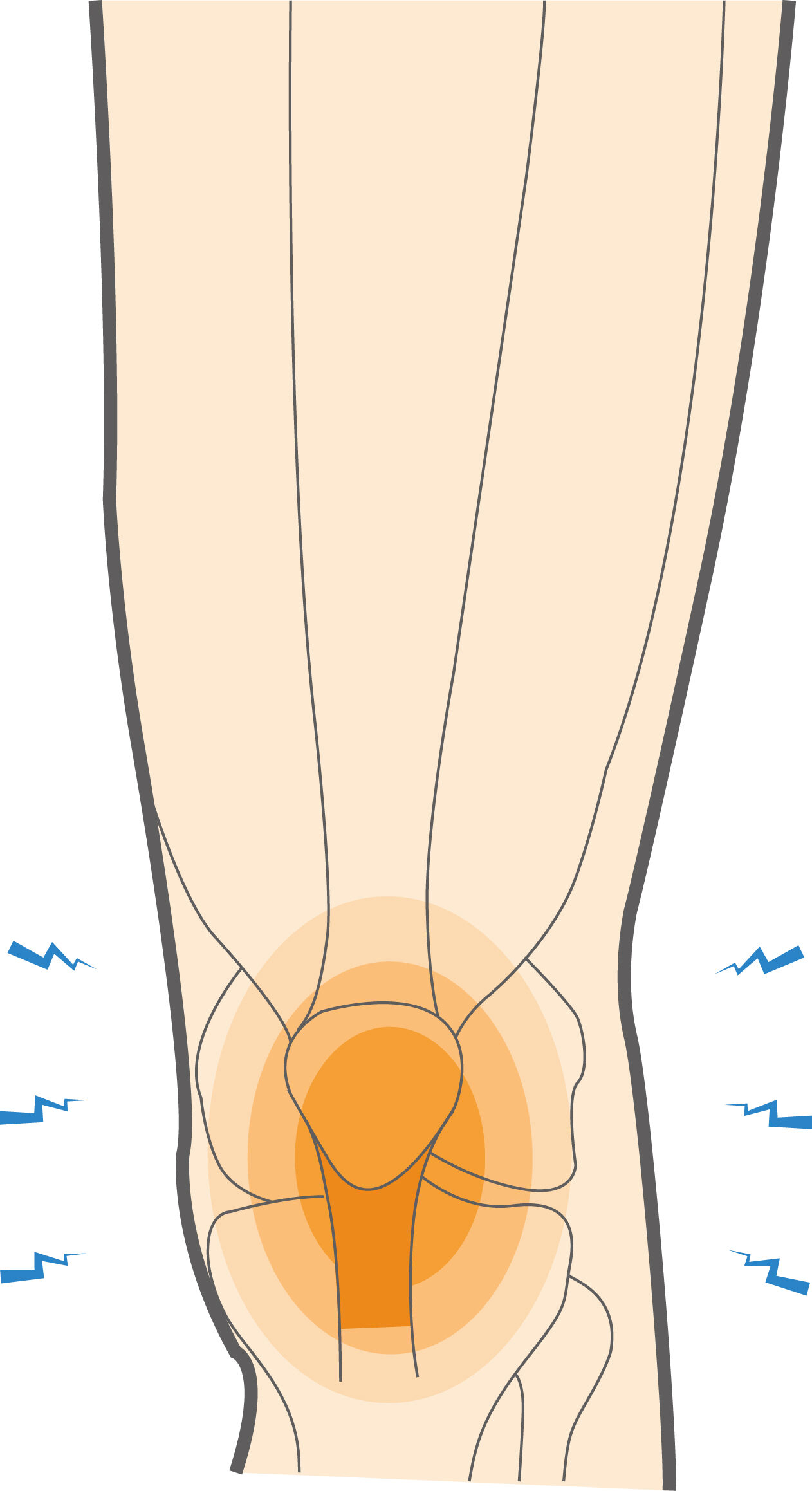The patella tendon comprises fibrous tissue that connects the patella (your kneecap) to the tibia (your shinbone). This tendon is vital in extending your knee to kick, run, and jump. Athletes commonly suffer from patella tendon inflammation, known as “jumper’s knee.” Patella tendonitis) causes inferior patellar pain that can interfere with your sports and daily activities.
Patella Tendonitis Causes, Symptoms & Treatment Options
The patella tendon comprises fibrous tissue that connects the patella (your kneecap) to the tibia (your shinbone). This tendon is vital in extending your knee to kick, run, and jump. Athletes commonly suffer from patella tendon inflammation, commonly known as jumper’s knee.
Overview
Overview

What causes Patella Tendonitis?
Patella tendonitis is commonly caused by overuse of the patella tendon, especially in sports that require a lot of jumping. Small tears can begin to appear in the tendon, resulting in inflammation and tendon strain.
Patella tendonitis is common in these sports:
- Basketball
- Soccer
- Volleyball
- Tennis
- Track & field (especially long jump and high jump)
- Skiing
- Gymnastics
- Dance
Symptoms
Patella tendonitis is characterized by inferior patellar pain just below the kneecap. Athletes with jumper’s knee may experience:
- Pain when with jumping and running
- Increasing pain over time
- Weakness in the knee
When to see a doctor
If you have pain below your kneecap that gets worse or doesn’t improve over time, it’s a good idea to make an appointment with your doctor to rule out a more serious injury. Your doctor will ask you questions about your knee pain, including how long you’ve been experiencing it and how it has affected your ability to participate in your sport and perform daily activities. He or she will examine your knee and may order an X-ray to rule out a bone-related issue causing your pain. A magnetic resonance imaging test (MRI) may be ordered to detect tiny tears in your patella tendon and to rule out other causes of your tendon strain or knee tendon inflammation.
Non-operative treatment
Patella tendonitis is always treated non-operatively. Home patellar tendonitis treatment may include the following:
- Rest and ice
- NSAIDs (nonsteroidal anti-inflammatory medications like Aspirin) for pain, especially before physical activity
- Wearing a “patella band,” or patella tendon strap, to reduce stress on the tendon
- Wearing a knee support
With rest and conservative patellar tendonitis treatment, athletes with patella tendonitis usually quickly recover with only a short break from play. Giving your knee sufficient rest and avoiding playing or working out until your pain has resolved is important. Physical therapy will play an essential role in a prompt return to play. Once you’re back in the game, proper stretching and warm-up can help you avoid a repeat injury. - Physical therapy to strengthen and stretch the patella tendon
If your symptoms persist, your doctor may offer an injection of platelet-rich plasma (PRP).
Try these exercises to help address your condition:
Below is a PDF of the Exercise Program
Recovery
With rest and conservative patella tendonitis treatment, athletes with patella tendonitis usually quickly recover with only a short break from play. Giving your knee sufficient rest is important and avoiding playing or working out until your pain resolves. Physical therapy will play an important role in a prompt return to play. Once you’re back in the game, proper stretching and warm-up can help you avoid a repeat injury.
GET BACK TO WHAT YOU LOVE. FASTER
Sources
https://physioworks.com.au/injuries-conditions-1/patella-tendonitis-tendinopathy
https://www.mayoclinic.org/diseases-conditions/patellar-tendinitis/symptoms-causes/syc-20376113
https://orthoinfo.aaos.org/en/diseases–conditions/patellar-tendon-tear/
https://www.medicalnewstoday.com/articles/321294.php
Frequently Asked Questions
What causes patellar tendonitis?
Patellar tendonitis is typically caused by repetitive stress on the tendon, leading to small tears. Over time, these tears cause inflammation, pain, and tendon weakening.
Can you walk with patellar tendonitis?
Yes, many people can still walk or climb stairs with patellar tendonitis, but recovery may be slow. Regular stretching and strengthening exercises are essential for healing.
Does patellar tendonitis require surgery?
Surgery is rarely needed for patellar tendonitis. Most cases respond well to rest, physical therapy, and other nonsurgical treatments. Surgery is considered only in severe or unresponsive cases.
Is patellar tendonitis permanent?
No, patellar tendonitis is not permanent. Mild cases can heal in about six weeks with proper care. More severe cases may take several months, especially if physical therapy is needed.

